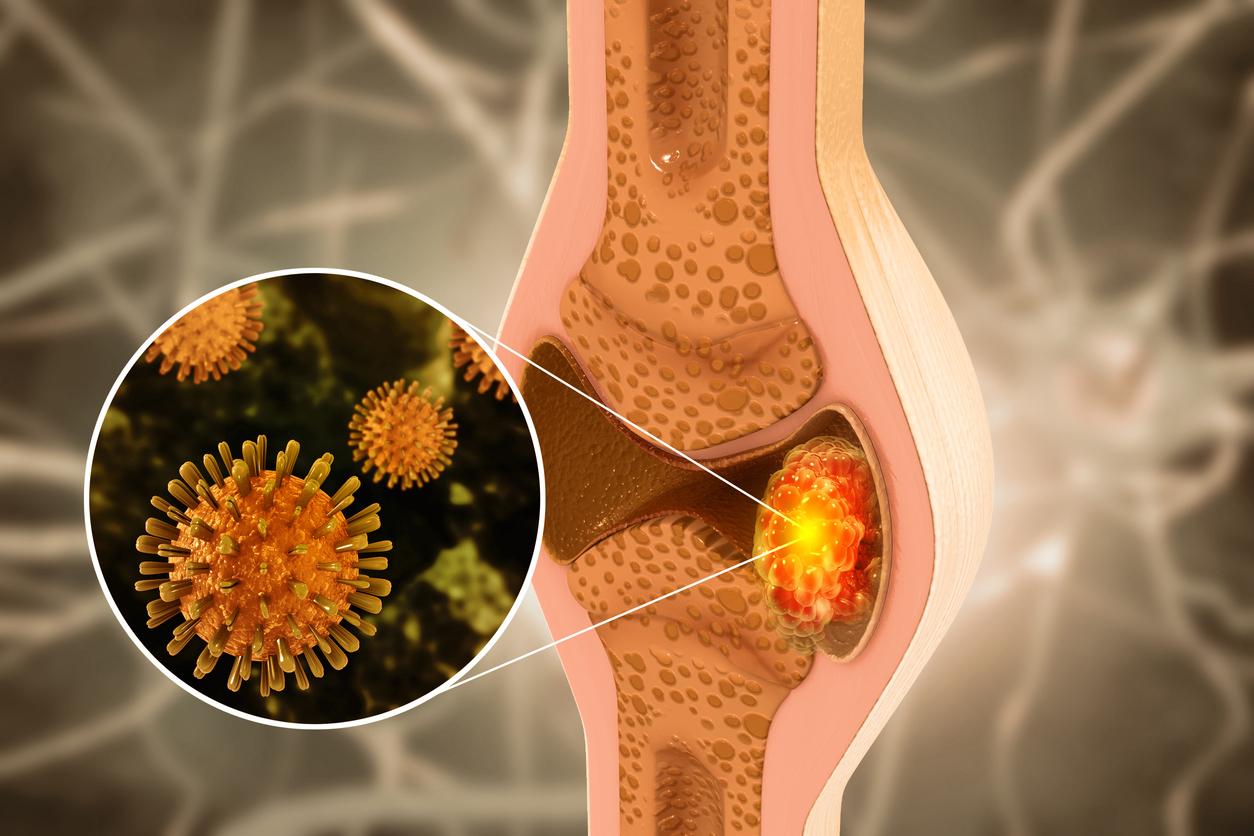Epilepsy is the second most common chronic neurological disease after migraine. It is not a rare disease: in France, around 650,000 people are affected, of which around 50% are young people under the age of 20.
But proof is to note that epilepsy remains unknown and a real taboo subjectunderlines the national association of patients Epilepsy France, on the occasion of the international day of epilepsy this February 14. The association organizes a communication campaign Epilepsy, let’s talk about it! in order to make the general public better aware of the daily life of people with epilepsy, and to point out the situations of rejection to which they may be subject in their social relations, at work, or at school.
Striking example, underlined by the association: the vast majority of people believe that epilepsy is just seizures sometimes spectacular. “Because of this many prejudice remain rooted in the minds of the public: mental illness, hysteria, madness, alcoholism… But in reality, epilepsy is a disease that is expressed in many ways”, she explains, with visible but also little visible, even invisible signs. And the problem is that by not talking about the many symptoms of epilepsy -other than seizures-, the diagnosis is often delayed, deplores the association. “Many testimonials from adults whose epilepsy was diagnosed late realize that their disease had been present for many years when they recall previous situations in their lives: difficult school career, learning difficulties, slowness, clumsiness…, explains Epilepsie France. The early diagnosis of their epilepsy would have allowed appropriate medical care and follow-up, and avoided stigmatizing situations that had a lasting impact on them.”
Besides, talking about the different forms of expression of epilepsy means fighting against a simplistic image of epilepsy that perpetuates received ideas, stigmatizes patients and can put people in danger.
Epilepsy: what is it exactly?
First thing to know: there is not one epilepsy, but several. The word “epilepsy” designates a group of diseases which have one main point in common: they are characterized by seizures resulting from abnormal electrical activity in the brain – this phenomenon can be compared to a “thunderclap” at the cerebral scale. Moreover, in Greek, the word “epilambanian” (which gave “epilepsy”) means “to seize or attack by surprise”.
Experts estimate that, in the large family of epilepsy, there are about 50 “epileptic syndromes” which vary according to the age of the patient, their causes and their symptoms.
Epilepsy: who does it concern? “Epilepsy is a disease that can occur at any age.“explains Dr. Nathalie De Grissac Moriez, neurologist. This neurological cerebral pathology is however more common in children and in the elderly.
What are the causes of epilepsy?
If, in some cases, it is impossible to identify the origin of the epileptic disease, some causes have been identified by Science:
- Acquired brain damage: it is thus possible to develop epilepsy after a head trauma or a cerebrovascular accident (CVA),
- A developmental anomaly: a malformation of the fetus during pregnancy can thus lead to epilepsy in the child,
- A genetic background: like migraine or asthma, epilepsy can have a genetic component that is transmitted hereditarily,
- An immunological, metabolic or even infectious disease: encephalitis (of viral origin, for example) can cause epilepsy.
Epilepsy: what are the symptoms?
As we have said, epileptic disease is characterized by seizures that occur due to abnormal electrical activity in certain populations of neurons in the brain. On the side of the symptoms, we therefore distinguish the symptoms of epileptic seizures but also the comorbiditiesthat is to say the symptoms of the disease which manifest themselves outside of the attacks.
Beyond the “cliché” of the epileptic seizure (with convulsions etc.), an epileptic seizure can result in almost invisible symptoms:
- An “absence”. In medical language, we speak of “breaking contact”. This “absence” of the patient can last from a few seconds to a few minutes,
- Tremors,
- Involuntary movements:it can be a question of chewing, snapping of fingers…” emphasizes Dr. De Grissac Moriez.
- Auditory and/or visual hallucinations,
- Abnormal muscle stiffness
- Confusion…
To know. “Epilepsy is defined by the repetition of spontaneous seizures, that is to say without a really identified cause.explains Dr. De Grissac Moriez. Having an epileptic fit during one’s lifetime, with an identifiable cause (stress, strong emotion, etc.), is not epilepsy: it is estimated that 10% of the world’s population will be one day concerned.“
“The fact that the epileptic seizure is spontaneous makes the epileptic disease particularly difficult to live with: patients often have the feeling of having a sword of Damocles above their headadds the neurologist. Seizures can occur at night; they generally last less than 3 minutes.“
On the side of comorbidities, these symptoms of the disease which are also present outside of crises, we can cite:
- pathological anxiety,
- depressive disorders,
- A loss of fluidity in intellectual functioning: “it absolutely does not mean that epileptics are less intelligent than the average person, but that they need more time to reason“says the specialist.
- Possibly impaired memory and/or language.
“The comorbidities of epileptic disease are sometimes more disabling than the seizures themselvesnotes the neurologist. Furthermore, we now know that these comorbidities do not develop as a reaction to the disease: they constitute symptoms in their own right.“
Epilepsy: how is the diagnosis made?
The reference examination for diagnosing epileptic disease is the electroencephalogram (ECG): it is carried out by the neurologist. “The ECG is however not sufficient: moreover, in the event of epilepsy, it is sometimes normal” emphasizes Dr. De Grissac Moriez. In parallel, the interrogation of the patient and the witness(es) to the seizures is “precious“.
“Positron emission tomography (TEP-scan or PET-scan), genetic analysis as well as cerebral MRI can refine the diagnosis by determining what type of epilepsy it is.“adds the specialist.
France, however, lags far behind in terms of diagnosis of epileptic disease : according to the Épilepsie France association, less than 10% of epileptic patients benefit from follow-up by a neurologist; moreover, there are only 2,500 active neurologists in France.
What treatments for epileptic patients?
Processing. In the majority of cases, the treatment of epilepsy is medication. “In about 70% of cases, drugs manage to balance the disease, i.e. to control the occurrence of attacks” notes the neurologist. There are many anti-epileptic drugs: “the choice is made according to the age of the patient, the type of epilepsy, the tolerance vis-à-vis the side effects…“
To know. “In children, treatment is not always necessary because the disease can disappear with age“says Dr. De Grissac Moriez. Thus, theepilepsy-absence is one of the most frequent forms of the disease in children: it appears around 5-7 years of age and its evolution is generally benign since it often disappears around adolescence.
In case of drug-resistant epilepsy (that is to say: which is resistant to anti-epileptic drugs), surgery is a possibility: “it involves removing the region of the brain that is causing the electric shocksexplains the neurologist. It is a solution which concerns a small minority of patients and which represents a real opportunity“.
Epilepsy: how do you live with this neurological disease?
“There are still many negative prejudices about epilepsy and epileptic patients are regularly confronted with the gaze of others.regrets Dr. De Grissac Moriez. Scandinavian studies have shown that people with epilepsy are more at risk of social and professional isolation.“
However, in the majority of cases (60% to 70%), thanks to medication, epilepsy can be controlled and patients can lead an almost normal life: go to school, work, drive, see friends. ..”A psychological follow-up is really essential to fight against school dropout, shame or even the risk of suicide.“
“For children with epilepsy, there are specialized establishments such as the ITEP Toul Ar C’hoat (Finistère): children (from 6 to 20 years old) are cared for globally by a team of 65 professionals, they learn to accept the disease, to identify their strengths and to build their self-esteem despite the pathology.“
Thanks to Dr. Nathalie De Grissac Moriez, neurologist at theTherapeutic, Educational and Pedagogical Institute (ITEP) Toul Ar C’Hoat (Finistère).
See the 2022 communication campaign “Epilepsy, let’s talk about it!”
Sources:
Read also :
- Epilepsy, incompatible with schooling?
- Maternal obesity increases risk of epilepsy in babies
- Epilepsy: the French know little about the disease

















